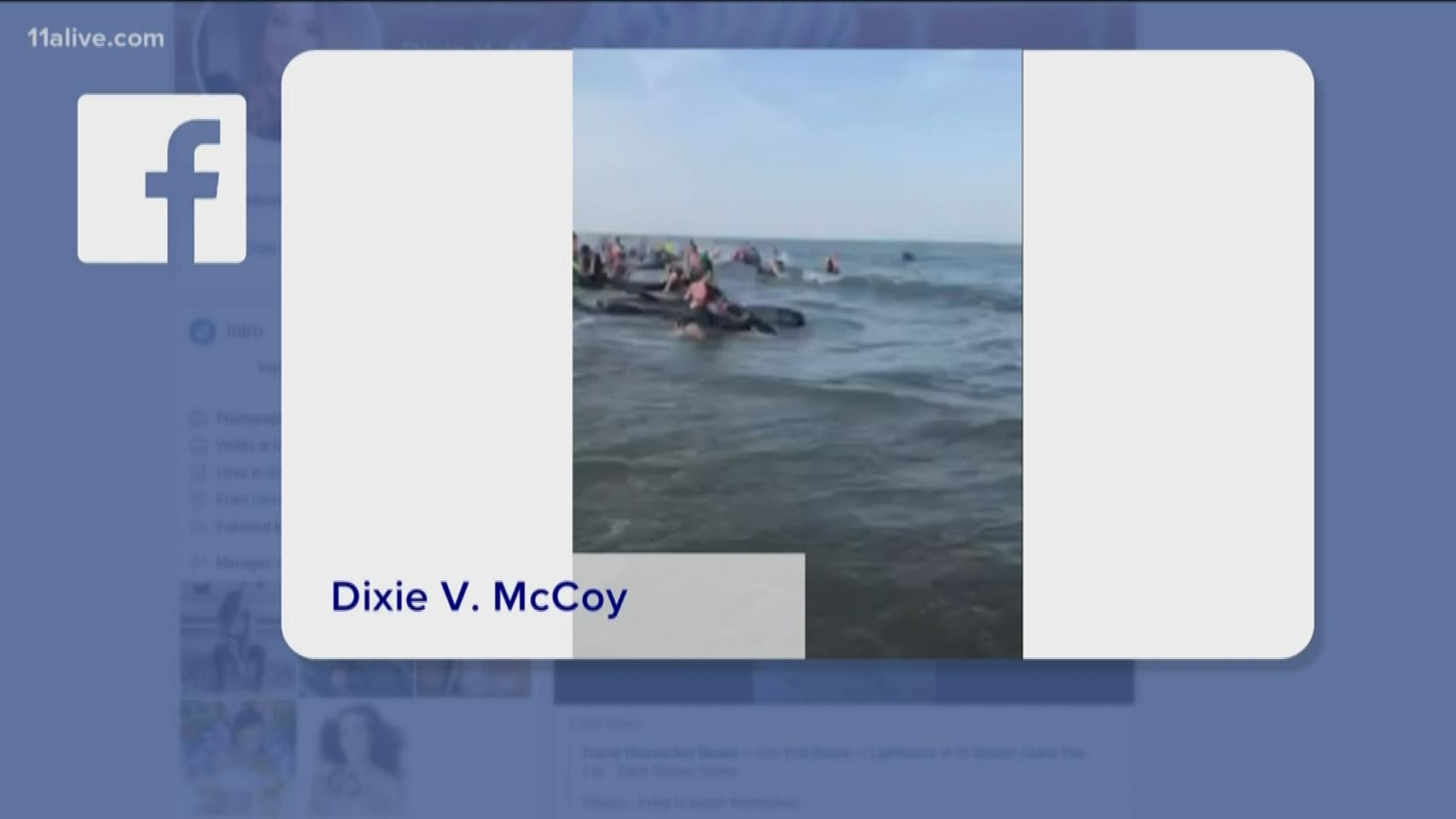It appeared to be a harrowing scene that, on first glance, would cause any onlooker confusion and concern.
Dramatic video showed at least 20 pilot whales beaching themselves at St. Simons Island on Tuesday evening, with groups of bystanders working to get them back out to sea.
But, in a Georgia Department of Natural Resources (DNR) release, wildlife biologist Clay George called this a “known natural occurrence.”
“The only thing we can do is continue pushing them out to seas,” George said.
Two whales even died, DNR said.
But, again, “among cetaceans, pilot whales are the most common species known to strand in mass numbers,” according to the department.
How come these whales put themselves in danger like this?
The science
The answer, it turns out, is there is no real definitive answer that marine biologists are aware of.
According to the New Zealand government’s Department of Conservation, the whales are “prolific stranders” and the behavior “is not well understood.”
There are known mass strandings that have involved as many as 1,000 pilot whales.
According to the New Zealand government, there are a couple of leading theories.
One, which they consider the most likely, says that the whales’ biological navigation systems – their echolocation – are simply a bad fit for shallow water.
“They generally prefer high relief (steep) areas such as the edge of the continental shelf,” the New Zealand Department of Conservation website states. “This would also explain why most mass strandings happen in summer, when the whales follow popular food sources inshore.”
That would certainly fit the St. Simons incident.
There are other theories. One says that when one whale gets lost, others simply follow to help.
The American Cetacean Society says that pilot whales wind up in mass strandings at least “partly because of their social nature.”
The ACS adds that: “Although no one knows why these beachings occur, some may result from persistence to keep the group together. Other reasons may involve mis-navigation when following prey, when traveling (possibly due to irregularities in the magnetic field), or possible parasitic infections resulting in neurological disorders.”
MORE HEADLINES

